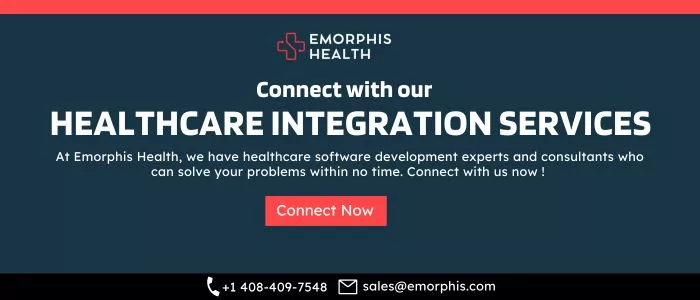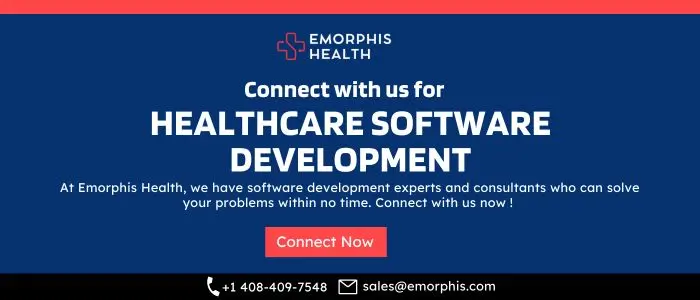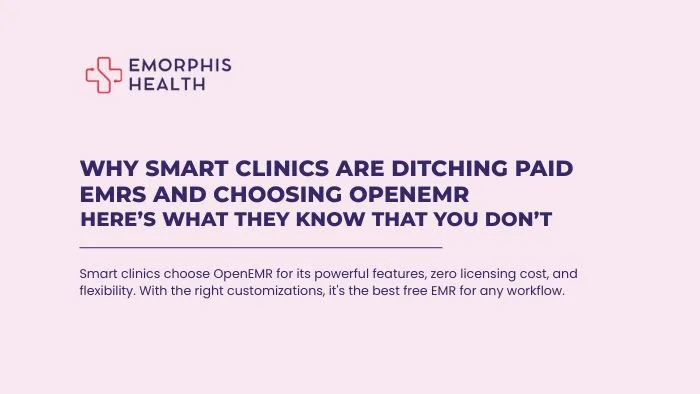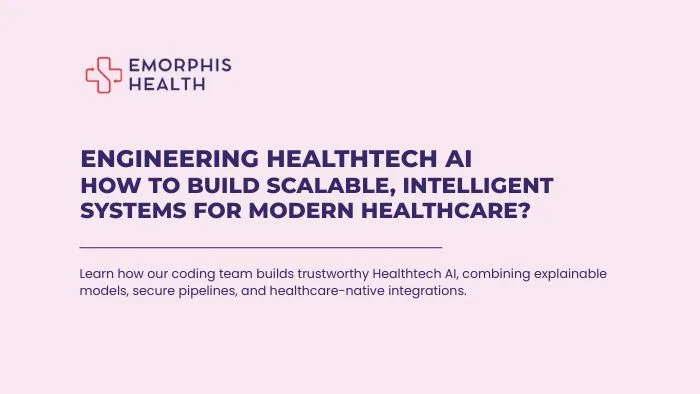What will you learn about Patient Care Management Software?
See Contents
- 1 What will you learn about Patient Care Management Software?
- 2 What is Patient Care Management?
- 3 What is Patient Care Management Software?
- 4 Why Patient Care Management Software Development and Integration is Crucial?
- 5 What are the trending features of patient care management software?
- 6 Integrate Patient Care Management Software into your existing solution
- 7 What challenges or pain points and solutions does it cover for both patients and providers?
- 8 How does patient care management software help both providers and patients?
- 9 Patient care management software, does it come with an app?
- 10 What is the cost of developing patient care management software?
- 11 Conclusion
- Understanding Patient Care Management.
- The functionality of Patient Care Management Software includes feature integration and compliance.
- Importance of Patient Care Management Software Development and Integration.
- Challenges and Solutions for Both Patients and Providers.
- Cost and Development Timeframe for a Patient Care Management Software.
What is Patient Care Management?
Patient care management encompasses a wide range of activities and responsibilities aimed at ensuring the well-being and optimal treatment of patients. Here are some key components.
- Assessment and Diagnosis – Healthcare professionals assess patients’ medical conditions, symptoms, and needs to diagnose their health issues accurately.
- Treatment Planning – Based on the diagnosis, healthcare providers develop personalized treatment plans that may include medication, therapy, surgery, lifestyle changes, or a combination of these.
- Coordination of Care – Patient care often involves multiple healthcare professionals across different specialties. Effective coordination ensures that each provider is informed about the patient’s condition and treatment plan, leading to seamless care delivery.
- Medication Management – Healthcare providers prescribe and monitor medications, ensuring proper dosages, potential interactions, and patient adherence.
- Monitoring and Follow-up – Patients’ progress and response to treatment need regular monitoring. Follow-up appointments and assessments help healthcare providers adjust treatment plans as necessary.
- Patient Education – Educating patients about their conditions, treatment options, and self-care practices empowers them to participate actively in their care and make informed decisions.
- Emotional Support – Patient care management also involves providing emotional support to patients and their families, especially during challenging times such as serious illness or recovery from surgery.
- Coordination with External Services – This may include liaising with other healthcare facilities, home care services, or community resources to ensure continuity of care beyond the hospital or clinic setting.
- Documentation and Record-Keeping – Accurate and thorough documentation of patient information, treatment plans, and progress is essential for maintaining continuity of care and ensuring legal and regulatory compliance.
- Quality Improvement – Healthcare organizations continuously strive to improve patient care quality by analyzing outcomes, identifying areas for improvement, and implementing best practices.
Effective patient care management requires collaboration, communication, empathy, and attention to detail from healthcare professionals across various disciplines.
What is Patient Care Management Software?
Patient care management software is a digital tool designed to streamline and enhance the process of patient care management. Essentially, it’s a computer program or application specifically created to assist healthcare providers in managing various aspects of patient care.
These software solutions help healthcare professionals organize patient information, track treatment plans, and facilitate communication among care team members. Patient care management software also enables efficient scheduling of appointments, medication management, and monitoring of patient progress.
By centralizing patient data and automating routine tasks, these software systems optimize workflow and enhance coordination among healthcare providers involved in patient care management. Additionally, they often include features for documenting patient encounters, generating reports, and ensuring compliance with regulatory standards.
Overall, patient care management software serves as a digital assistant for healthcare professionals, supporting them in delivering high-quality care while minimizing administrative burdens. It acts as a hub for all aspects of patient care, from initial assessment to ongoing monitoring and follow-up, making the process more efficient and effective.
Why Patient Care Management Software Development and Integration is Crucial?
Patient care management software development and integration offers various benefits for healthcare providers and patients. Here’s a breakdown of the advantages, supported by recent statistics:
A. Improved Efficiency and Productivity
32% of a physician’s time is wasted on administrative tasks as reported by American Medical Association. Patient care software automates tasks like appointment scheduling, billing, and recordkeeping, freeing up valuable time for patient interaction and care.
B. Increased Patient Satisfaction
73% of patients expect healthcare providers to offer online appointment scheduling according to two reports, one from Accenture and another report from Experian Health. Patient portals integrated with the software empower patients to manage appointments, access medical records, and communicate with providers, leading to greater satisfaction.
C. Streamlined Financial Management
A study by the American Hospital Association found that hospitals can achieve 5-10% reductions in administrative costs through improved revenue cycle management. Integrated software streamlines billing and coding processes, leading to faster reimbursements and improved financial health.
D. Boosts Population Health Management
According to estimates from the Centers for Disease Control and Prevention (CDC), approximately 90% of healthcare expenses in the United States are allocated to managing chronic illnesses and mental health conditions. This amounts to roughly $3.7 trillion annually. Patient care software facilitates population health management by allowing providers to identify at-risk patients and implement preventive care measures.
Here’s the key takeaway: Patient care management software development and integration is an investment in the future of healthcare. It empowers providers to deliver better care, improve patient satisfaction in healthcare, and optimize financial performance. By leveraging technology, healthcare organizations can create a win-win situation for both providers and patients.


What are the trending features of patient care management software?
The care management software for patients comes packed with various features designed to streamline and enhance patient care. These features serve different functions, all aimed at supporting healthcare professionals in managing patient information, treatment plans, and communication effectively.
1. Patient Information Management
At the core of the software is the ability to store and organize patient information securely. This includes demographics, medical history, insurance details, and contact information.
2. Appointment Scheduling
This feature allows healthcare providers to schedule patient appointments efficiently, considering the availability of patients and providers. It helps in optimizing clinic or hospital workflow and reducing wait times.
3. Treatment Plan Tracking
Healthcare professionals can create and track personalized treatment plans for each patient within the software. This feature ensures that all members of the care team are aware of the prescribed treatments and can monitor their implementation and effectiveness.
4. Communication Tools
The solution often includes communication tools such as messaging systems or secure portals. These facilitate collaboration among healthcare providers, enabling them to share information, discuss cases, and coordinate care seamlessly.
5. Medication Management
This feature assists healthcare providers in prescribing medications, checking for potential interactions, and tracking patients’ medication histories. It helps ensure that patients receive the correct medications at the appropriate dosages.
6. Clinical Documentation
Documentation of patient encounters, including notes, assessments, and treatment plans, is essential for maintaining accurate medical records. The care management platform provides tools for efficient and comprehensive clinical documentation.
7. Reporting and Analytics
Healthcare organizations can generate reports and analyze data within the software to track patient outcomes, monitor trends, and identify areas for improvement in patient care management processes.
8. Patient Portal
Some patient care software includes a patient portal, allowing patients to access their own medical records, schedule appointments, communicate with their healthcare providers, and participate more actively in their care.
9. Integration with External Systems
Integration capabilities enable patient care software to connect with other systems such as electronic health records (EHRs), laboratory systems, and billing software, ensuring seamless information exchange and workflow continuity.
10. Compliance and Security Features
To ensure patient data confidentiality and compliance with healthcare regulations, patient care management software includes features such as access controls, encryption, and audit trails.
In summary, patient care management software offers a comprehensive suite of features to support healthcare providers in delivering high-quality care to their patients. Let’s now dive into integrating this solution into your existing healthcare solutions.
Integrate Patient Care Management Software into your existing solution
Integrating patient care management into your existing solution can enhance efficiency and streamline workflows across various aspects of healthcare delivery. Here’s how and where you can seamlessly integrate patient care management software.
a. Electronic Health Record (EHR) Systems Integration
By integrating patient care software with your EHR system, you can centralize patient information and streamline access for healthcare providers. This integration enables real-time updates of patient records, treatment plans, and care coordination efforts, ensuring continuity of care across different healthcare settings.
b. Appointment Scheduling and Practice Management Integration
Integrating care management software with appointment scheduling and practice management systems simplifies administrative tasks and improves patient flow. Seamless integration allows for automatic appointment updates, billing synchronization, and patient communication, leading to more efficient practice operations and enhanced patient experience.
c. Telemedicine Platform Integration
In today’s digital healthcare landscape, integrating patient care management software with telemedicine platforms extends the reach of healthcare services beyond traditional settings. This integration enables seamless virtual consultations, remote monitoring, and follow-up care, enhancing accessibility and convenience for patients while maintaining continuity of care management.
d. Remote Patient Monitoring Integration
Integrating patient care software with remote patient monitoring devices and systems facilitates proactive management of chronic conditions and post-acute care. Real-time data integration allows healthcare providers to monitor patients’ vital signs, medication adherence, and symptom progression remotely, enabling timely interventions and personalized care management.
e. Patient Engagement Solution Integration
Integrating patient care management software with patient engagement solutions enhances communication and collaboration between healthcare providers and patients. This integration enables secure messaging, appointment reminders, and access to health information, as well as educational resources. Thus empowering patients to participate in their care management and decision-making processes actively.
By strategically integrating patient care management software into your existing solution, you can optimize workflows, improve communication, and deliver patient-centered care across the continuum of healthcare delivery.
Now, follow us to find the challenges and solutions it provides to patients and healthcare providers.
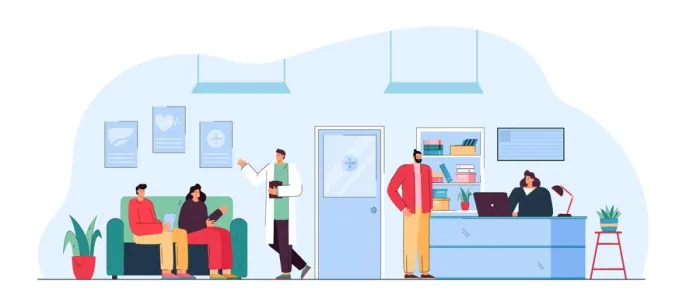

What challenges or pain points and solutions does it cover for both patients and providers?
Patient care management software addresses various challenges or pain points for both patients and healthcare providers. Let’s explore these challenges and unveil the comprehensive solutions tailored to address each one.
Challenges and Solutions for Patients
Access to Care
Challenge: Difficulty in accessing healthcare services, especially for those in remote areas or with mobility issues.
Solution: Patient care software facilitates online appointment scheduling and telemedicine, making it easier for patients to access care from anywhere.
Communication Barrier
Challenge: Limited communication channels with healthcare providers, leading to unanswered questions or concerns.
Solution: Patient portals with secure messaging features enable direct communication between patients and providers, fostering better communication and addressing patient queries promptly.
Understanding Medical Information
Challenge: Difficulty in understanding medical terminology or treatment plans.
Solution: Patient care software provides access to educational resources and patient-friendly explanations of medical information, empowering patients to make informed decisions about their care.
Challenges and Solutions for Providers
Care Coordination
Challenge: Difficulty in coordinating care among multiple healthcare providers and specialties.
Solution: Patient care management software offers care coordination tools that streamline communication and collaboration among providers, ensuring all involved parties are informed and working together effectively.
Administrative Burden
Challenge: Time-consuming administrative tasks such as appointment scheduling, billing, and documentation.
Solution: Automation features in software streamline administrative processes, allowing providers to spend more time on direct patient care.
Medication Management
Challenge: Risk of medication errors or adverse reactions due to manual prescribing and reconciliation processes.
Solution: Electronic prescribing and medication reconciliation features in patient care management software help reduce medication errors, enhancing patient safety and treatment effectiveness.
By addressing these challenges through patient care management software, both patients and healthcare providers can experience improved access to care, communication, understanding of medical information, care coordination, administrative efficiency, and medication management.
Let us delve into the benefits of the patient care solution.
How does patient care management software help both providers and patients?
Patient care management software benefits both healthcare providers and patients in several ways.
For providers, patient care management software streamlines workflows and improves efficiency. With this software, providers can easily access patient information, such as medical history and treatment plans. This helps in allowing for more informed decision-making and personalized care. Additionally, patient care software facilitates communication and collaboration among healthcare teams, ensuring that everyone involved in a patient’s care is on the same page. This coordination leads to more effective and coordinated care delivery, ultimately improving patient outcomes.
For patients, patient care software enhances convenience and accessibility. Through patient portals, patients can access their medical records, schedule appointments, and communicate with their healthcare providers from the comfort of their own homes.
This empowers patients to take a more active role in their healthcare and promotes engagement in their treatment plans. Furthermore, features like appointment reminders and medication management tools help patients stay organized and adhere to their treatment regimens, leading to better health outcomes.
Hence, the patient care software benefits both providers and patients by improving efficiency, communication, and coordination of care, ultimately leading to better patient outcomes and enhanced patient engagement in their healthcare journey.
Patient care management software, does it come with an app?
Yes, many patient care solutions come with a mobile application for both healthcare providers and patients. These mobile apps are designed to provide convenient access to key features and functionalities of the software. Thus, allowing users to manage patient care tasks, communicate with healthcare teams, and access medical information on the go. Here’s how these mobile apps typically serve both providers and patients.
Mobile App for Healthcare Providers
- Access to Patient Information: Healthcare providers can securely access patient medical records, treatment plans, test results, and other clinical information from their mobile devices, enabling them to make informed decisions and provide timely care.
- Communication and Collaboration: Mobile apps often include features for secure messaging and communication among healthcare team members, facilitating real-time collaboration and coordination of care.
- Task Management: Providers can use mobile apps to manage tasks, track appointments, and view their schedules, ensuring that they stay organized and on top of patient care responsibilities.
- Medication Management: Some mobile apps include features for electronic prescribing, medication reconciliation, and dosage tracking, allowing providers to manage medications and review prescription history on the go.
- Documentation: Providers can use mobile apps to document patient encounters, record notes, and update patient records in real-time, improving efficiency and accuracy in documentation.
Mobile App for Patients
- Appointment Scheduling: Patients can use the mobile app to schedule appointments, view available time slots, and receive appointment reminders, improving access to healthcare services and reducing no-shows.
- Access to Medical Records: Patient mobile apps typically provide access to medical records, test results, treatment plans, and medication lists, empowering patients to take a more active role in managing their health.
- Communication with Providers: Patients can use the app to communicate securely with their healthcare providers, ask questions, request prescription refills, and receive instructions or follow-up guidance.
- Medication Reminders: Mobile apps often include features for medication reminders and dosage tracking, helping patients adhere to their medication schedules and avoid missed doses.
- Health Education and Resources: Patient mobile apps may offer educational resources, health tips, and information about specific health conditions, empowering patients to learn more about their health and make informed decisions about their care.
Overall, mobile apps complement the functionality of patient care. It is by providing convenient access to essential features and information. Also, enhancing communication and collaboration, and improving the overall patient experience.
Further, let’s check the requirements, cost, and timeframe of developing the solution for patient care.


What is the cost of developing patient care management software?
Developing patient care management software involves several factors that can influence the overall cost and timeframe. Here’s a brief overview.
What’s Needed
- Requirements Gathering – The initial phase involves gathering requirements through discussions with stakeholders, including healthcare providers, administrators, and patients, to understand their needs and preferences for the software. This phase sets the foundation for the development process.
- Design and Prototyping – Designing the user interface (UI) and user experience (UX) of the software is crucial for usability and effectiveness. Prototyping helps validate design concepts and gather feedback from users before full-scale development begins.
- Development – This phase involves writing the code and implementing the functionality of the software based on the gathered requirements and approved designs. It includes backend development for data management, API integration, and frontend development for the user-facing interface.
- Testing and Quality Assurance – Rigorous testing is essential to ensure that the software functions as intended, is free of bugs and errors, and meets quality standards. This includes functional testing, usability testing, performance testing, and security testing.
- Deployment and Training – Once the software is developed and tested, it needs to be deployed to the production environment. Training sessions may be conducted for healthcare providers and staff to familiarize them with the software and ensure smooth adoption.
Development Timeframe
The development timeframe for patient care management software can vary depending on the complexity of the requirements. Also, the scope of features, and the size of the development team. However, a rough estimate for the development timeframe could be:
- Requirements Gathering and Design – 1-2 months
- Development – 3-6 months
- Testing and Quality Assurance – 1-2 months
- Deployment and Training – 1 month
Cost
The cost of developing patient care management software depends on factors such as the complexity of features, technology stack, also development resources. One thing that matters the most is the location of the development team. It ranges from USD 10,000 to USD 100,000. It’s essential to consider ongoing maintenance and support costs beyond the initial development phase.
Conclusion
In conclusion, patient care management software offers a transformative solution to streamline healthcare delivery. It improves patient outcomes and also, enhances care coordination. For customized development tailored to your organization’s needs, connect with Emorphis Health today. Together, let’s pave the way for a more efficient and patient-centered healthcare system.
